When: December 2019 and January 2020 Duration: 15 days Distance covered: 2300 km
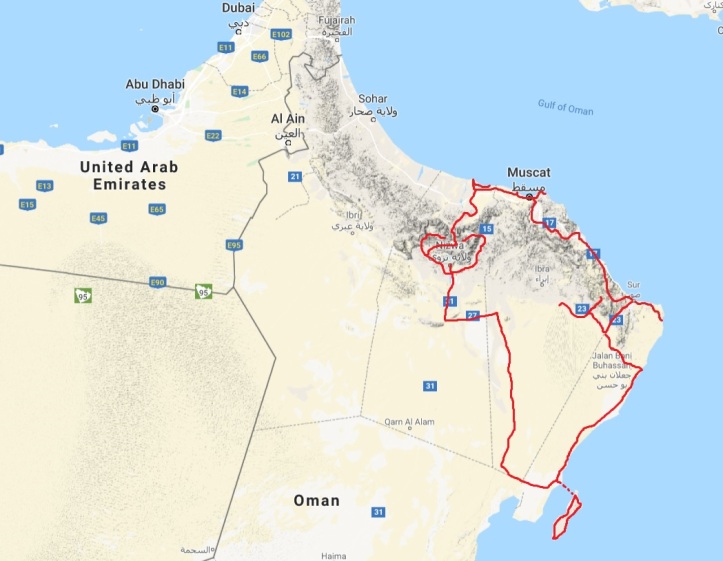
Of course, Oman is not in Africa! Well, at least not for about the last 25 million years, since the Arabian plate separated from the African one. So, what is Oman doing in African ramblings?
For the last ten years, we have been spending all our vacations in Africa. It was about time for us to peek into some different corners of our planet, just for a change. So, for this year’s festive season, we were looking for some other destination, outside the dark continent. It has to be relatively warm during the northern hemisphere winter and it has to offer our favorite mode of travel: independent traveling in a hired car and camping.
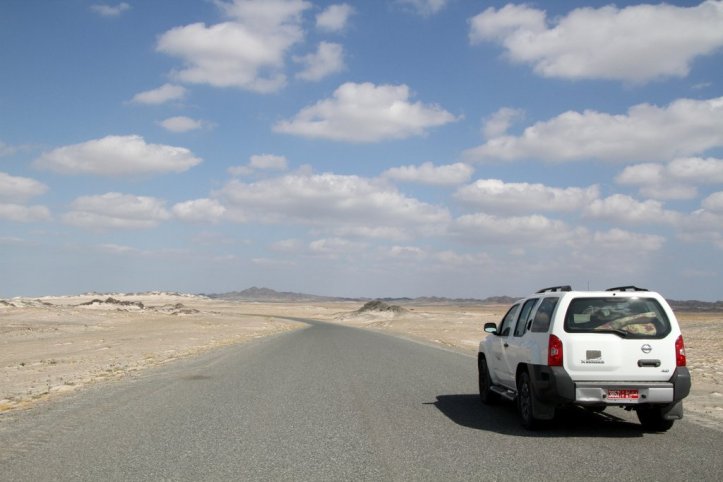
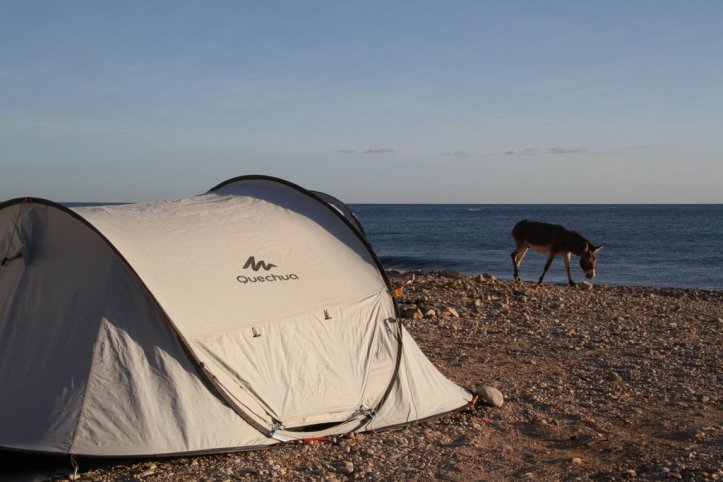
Oman was an obvious choice. Tucked into the eastern corner of the Arabian peninsula, it is exotic enough, yet still relatively safe destination in that very troubled part of our world. Lately, Oman is turning into a tourist and traveling hotspot and is immensely gaining in popularity, both among high-end tourists and budget-conscious travelers.
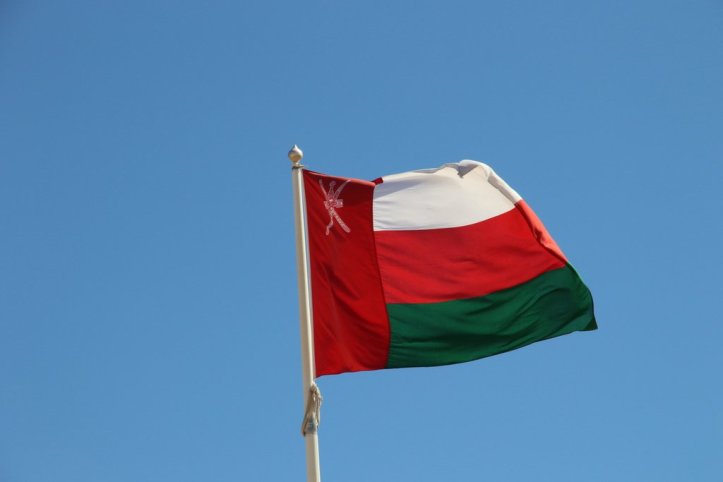
Oman is not a small country, so it was clear from the start, that in two weeks we can’t cover it whole. While planning this trip, we concentrated on three main geographical areas.
The first one was the central coast, covering the shores between the town of Barka on the Sea of Oman and Masirah Island in the Arabian Gulf. This part offers some splendid beaches, as well as some spectacular wadis, wild and narrow gorges, which, over the millenniums, water has carved into the terrain on its way from high mountains to the sea.
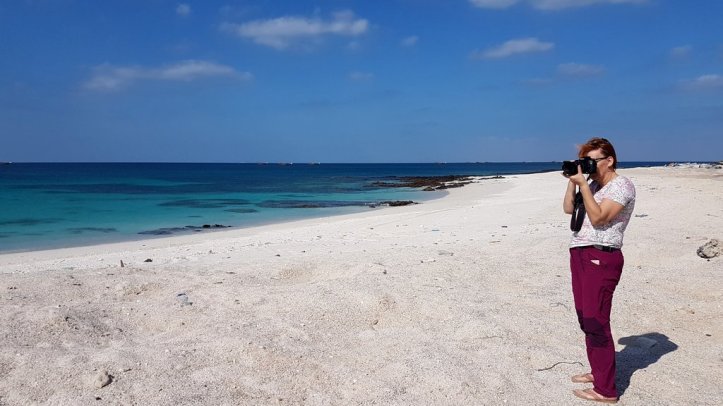
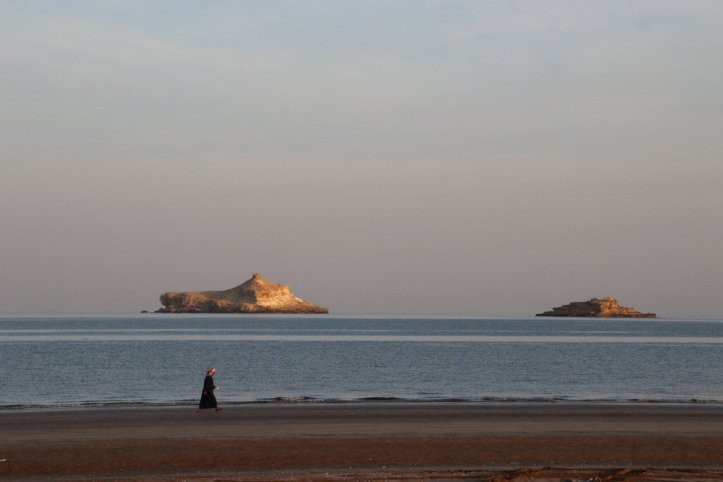
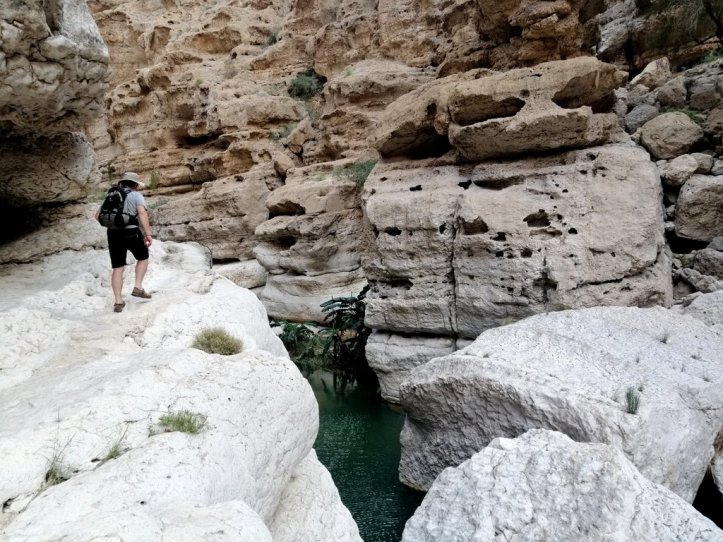
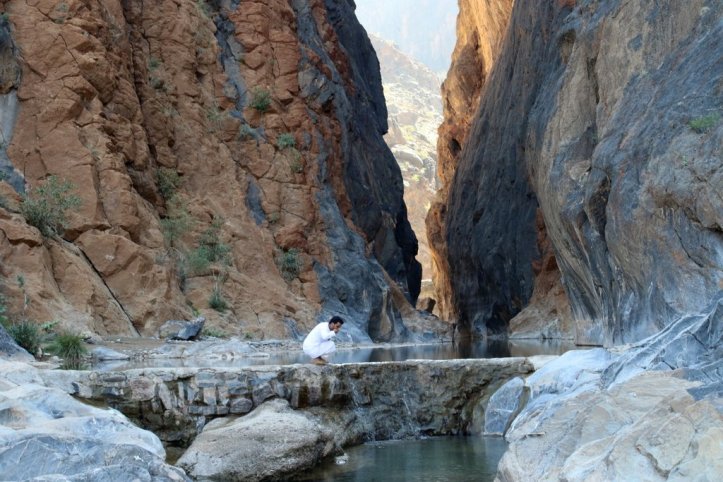
The second area was Al Hajar Mountains, a wild range of high altitude plateaus and mountain peaks, reaching heights of up to 3.000 meters, with many important and picturesque towns and forts from Oman’s turbulent history. And in the rain shadow south-west of this mountain range, there lies a wast area of another kind of sea – a sand one. Harsh and yet melancholic and mysterious environment of typical sand desert, with remote Wahiba Sands in its heart.
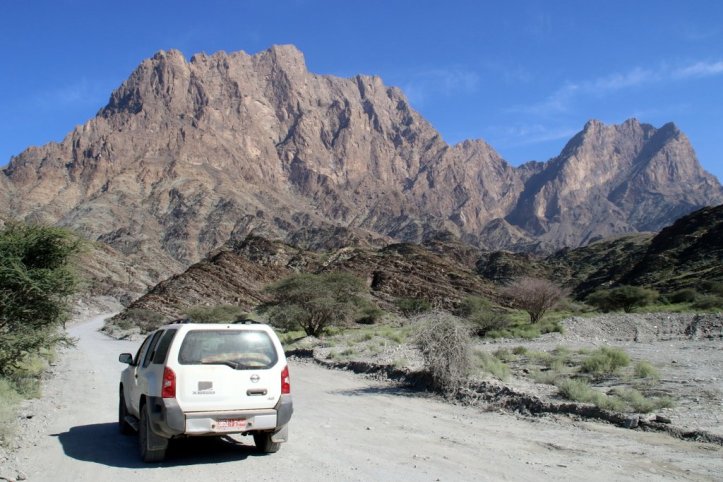
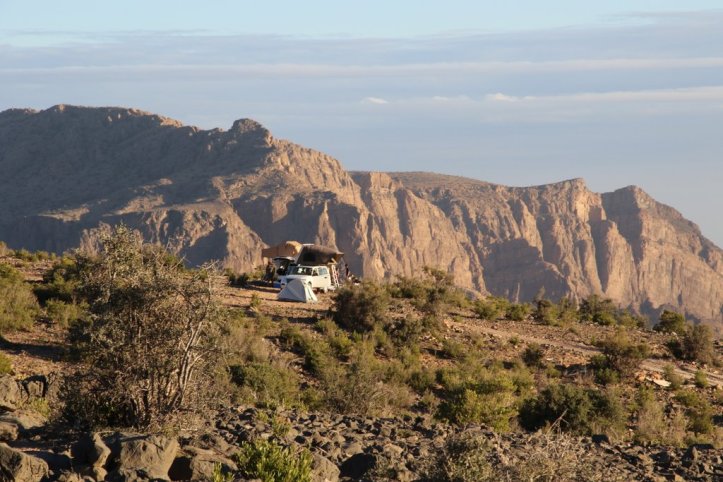
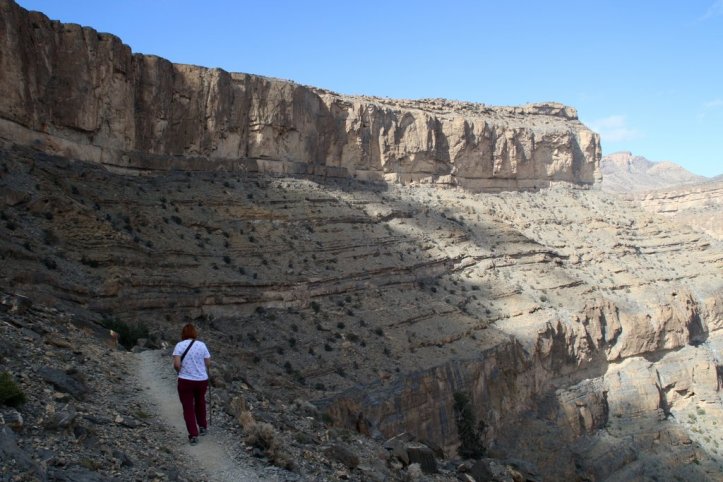
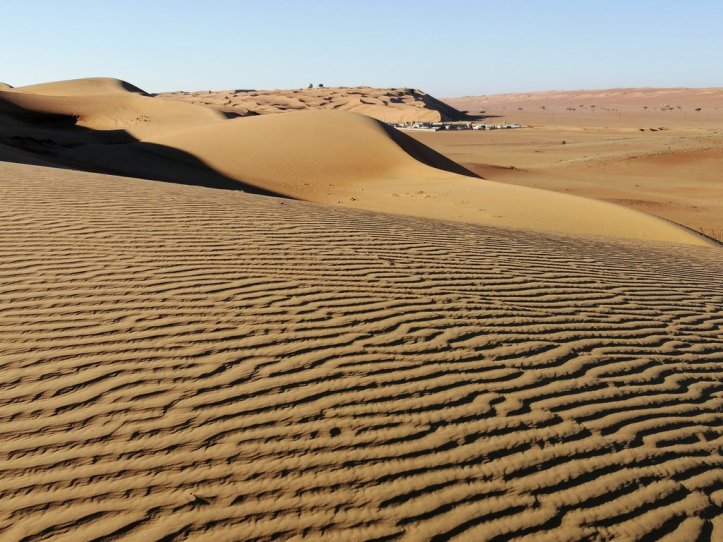
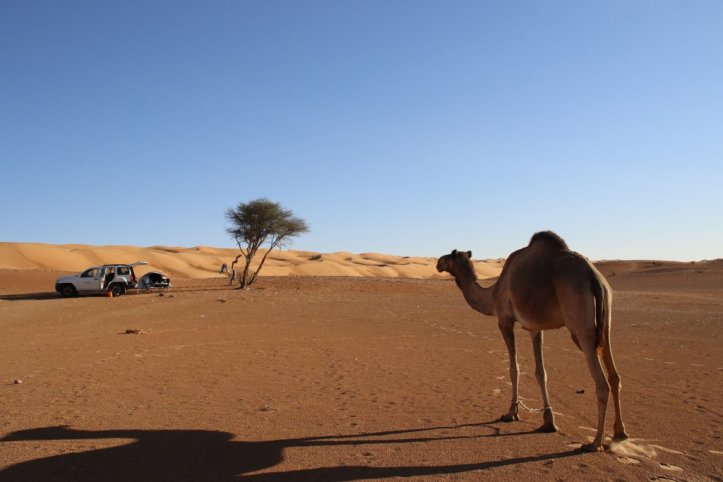
And the third epicenter of our interest in Oman was the capital of the country, the city of Muscat. From few small scattered ports and settlements along the coast of Gulf of Oman in the past, it has grown in the recent centuries into a bustling, picturesque and obviously very reach metropolis, stretching over about 40 km of shoreline.
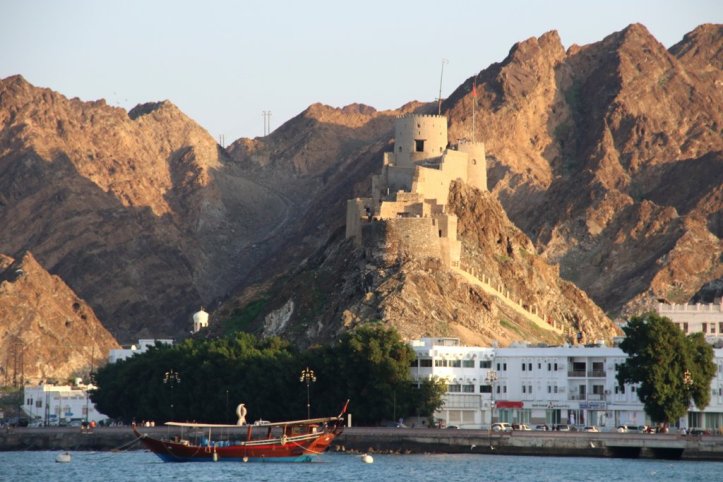
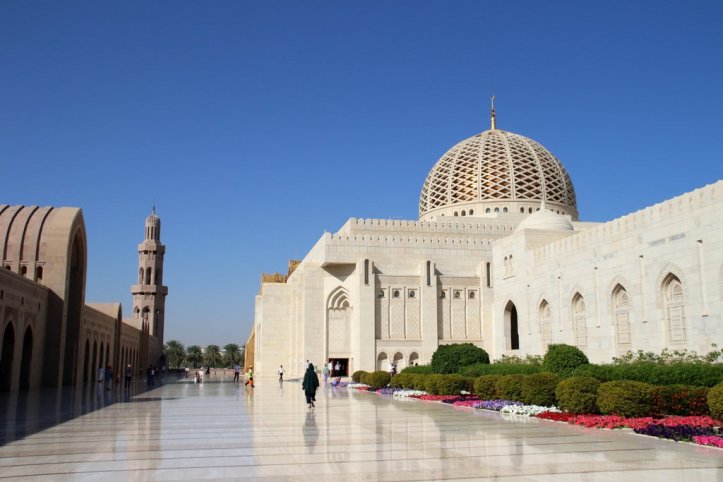
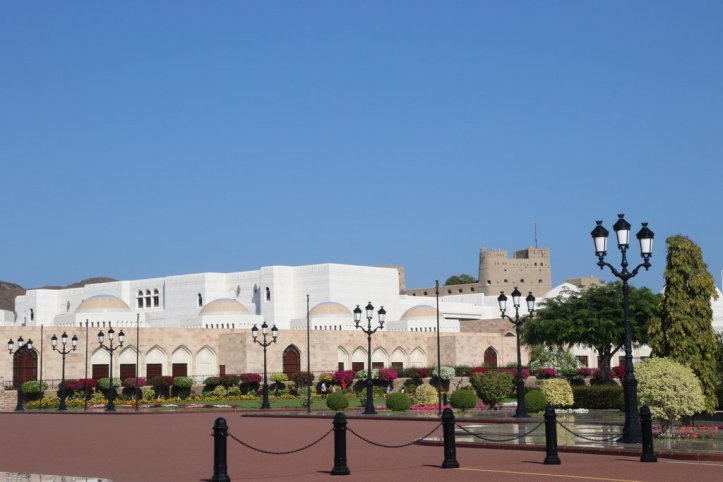
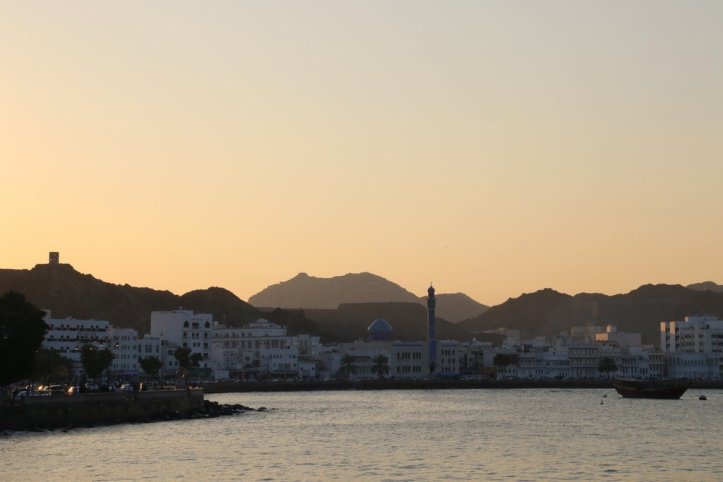
Oman is a very camping-friendly country. Probably due to their nomadic way of life in the past, camping is a totally self understandable way of traveling for Omanis, even by tourists. You can pitch your tent anywhere you want, being on the beach, on some remote mountain pass, in the middle of the desert, or even in the park in the city – no one will even blink an eye.
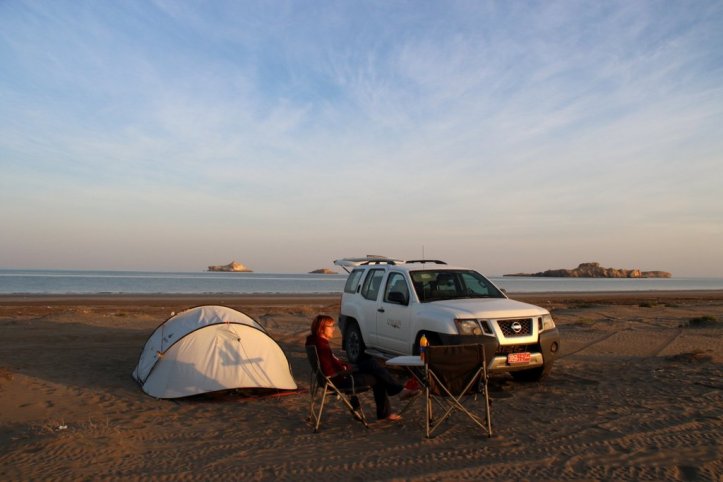
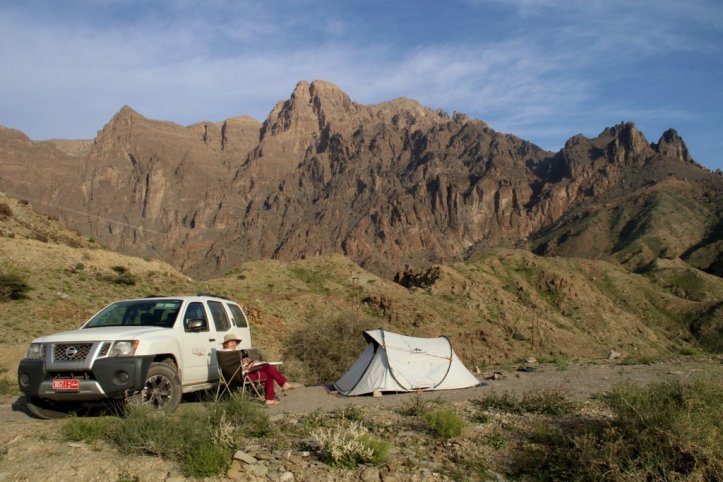
We have rented camping equipment upon our arrival into Oman. There are a couple of companies in Muscat, which specialize in renting 4×4 cars and a complete range of camping equipment. One of them is Nomad Tours. When we contacted them, all of their fully equipped 4×4 cars were already booked out, but we were at least able to hire complete camping set from them. Nomad Tours offer both rooftop tents, such as we are used in Africa, as well as normal ground tents. We knew that winds down there are often very strong and as there are not many dangerous wildlife around, we opted for a ground tent, which proved to be a good decision. They also helped us find an independent car rental company, that has offered us decent 4×4 for a very competitive price.
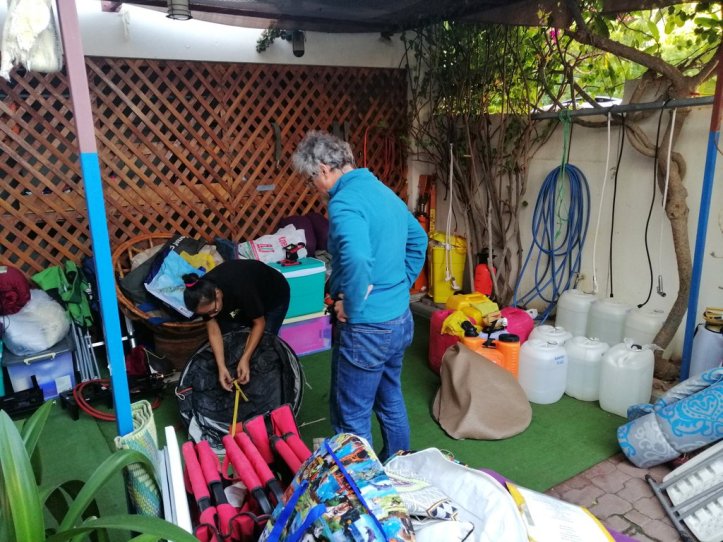
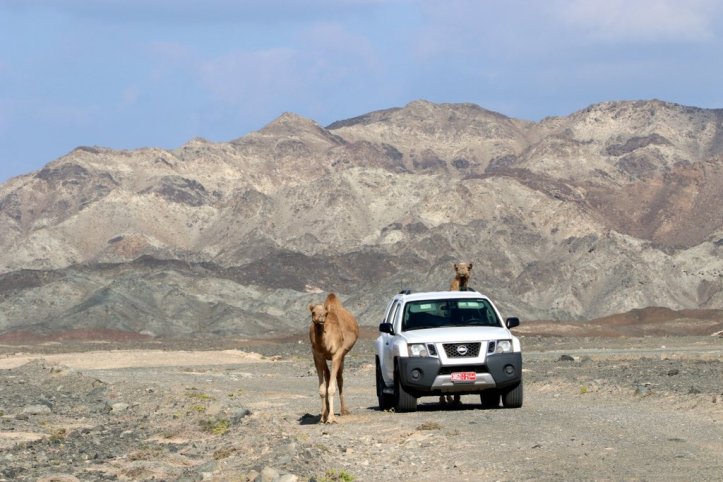
We mainly cooked ourselves, but we also often ate in some of their simple restaurants or coffee shops, that can be found in every town or village. They usually offer a wide variety of simple, but tasty meals, mainly based on rice with chicken, mutton or fish, accompanied by various salads and spicy sauces.

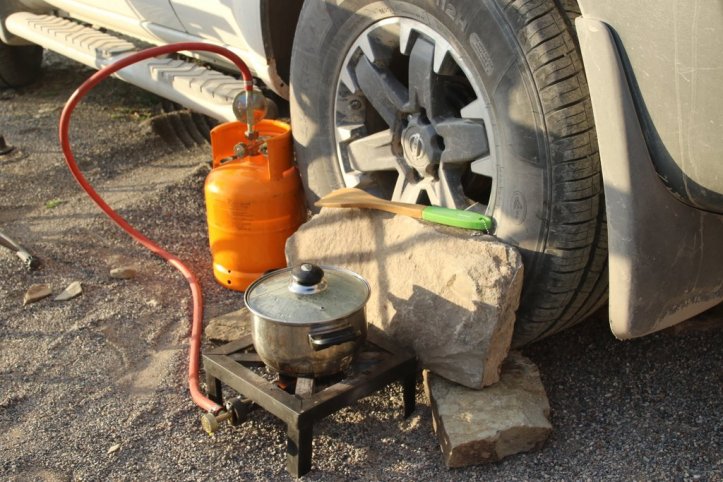
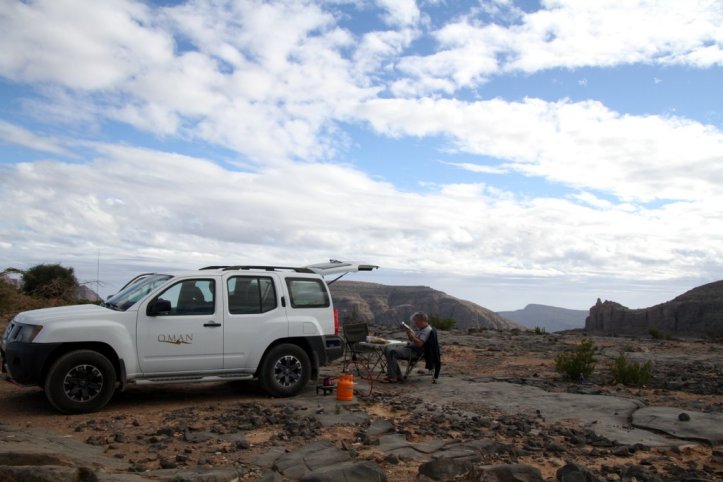
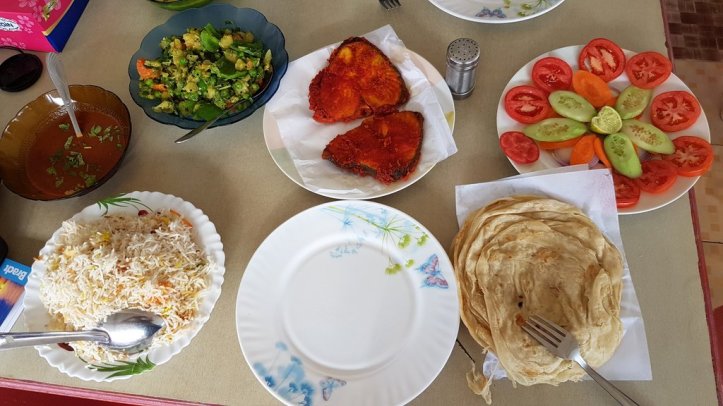
Main roads in Oman are excellent, mostly multi-line highways of western standards, without any potholes or unexpected obstacles. The only danger, that one must be careful about in windy areas, are occasional sand dunes, that can sometimes creep onto the road.
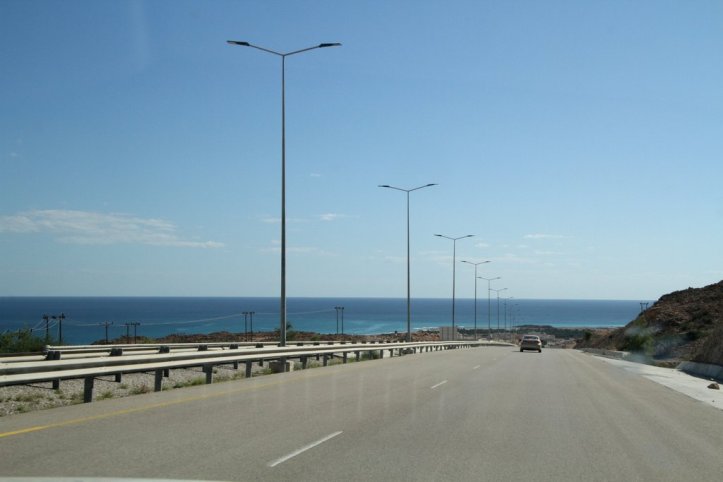
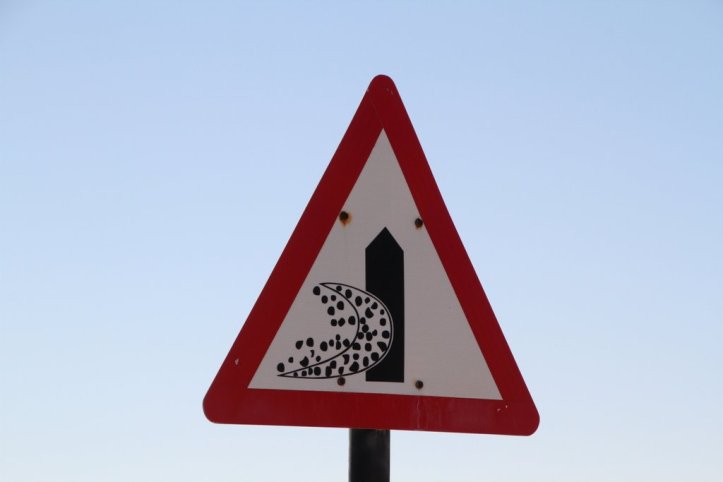
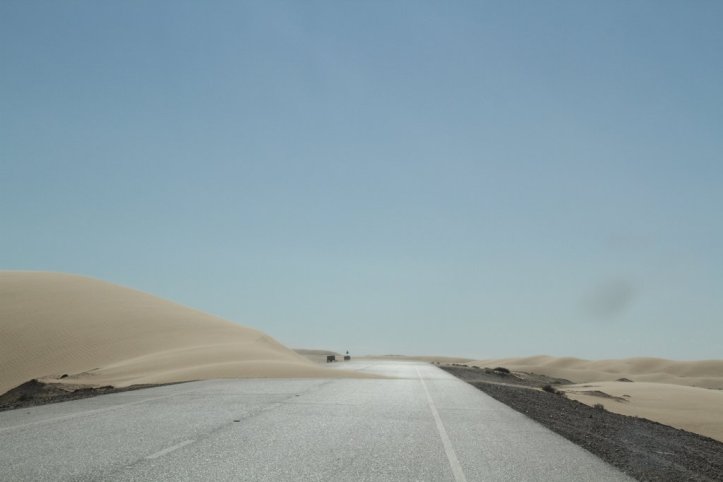
Mountain roads, on the other hand are often narrow and extremely steep with very little place on the side for two cars to pass each other but are also very well maintained. But after the torrential rains, some of them can be washed away and become impassable for short periods, until they are repaired. Luckily, we have had fantastic weather during our trip, with only a couple of raindrops.
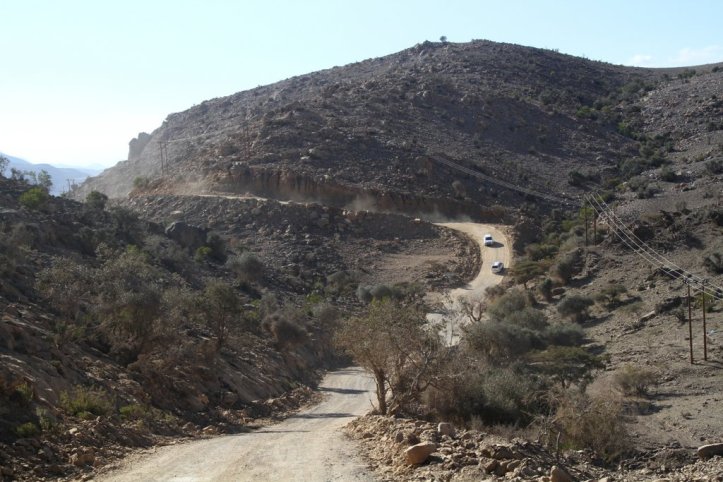
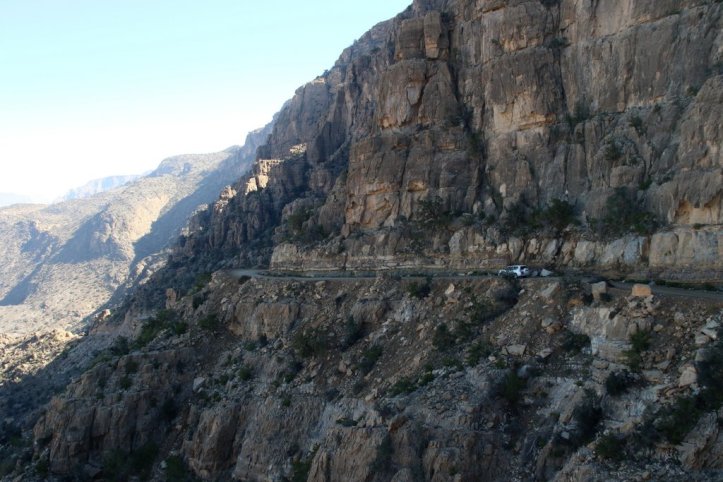
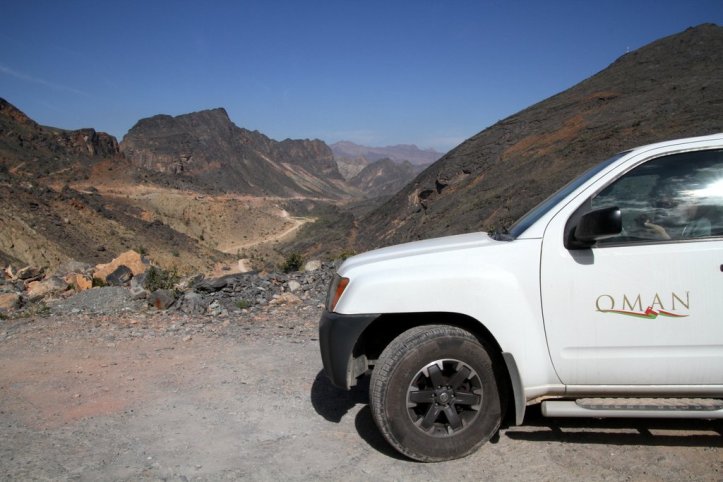
The main difference between Oman and Africa that we are used of, is of course the lack of wildlife. Not that there are none of it in Oman, but certainly not in such quantities and varieties, as in Africa. Most common are of course camels. One can find those “ships of the desert”, either domesticated or (semi?)wild all over the country, except in high mountains. In stony mountain regions, they are replaced by numerous goats and donkeys.
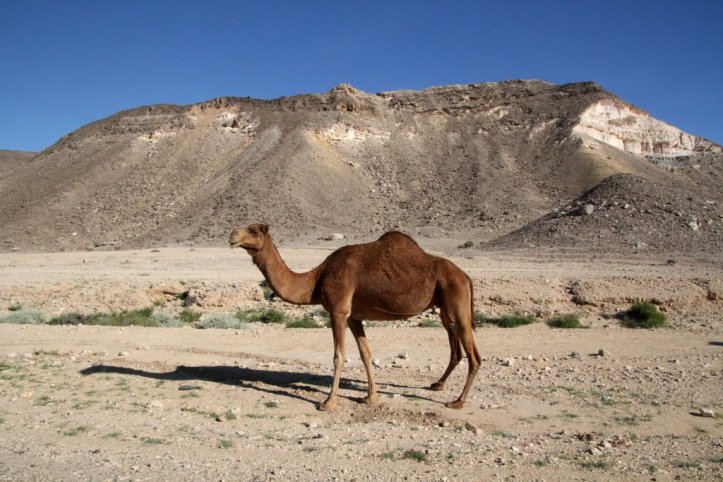
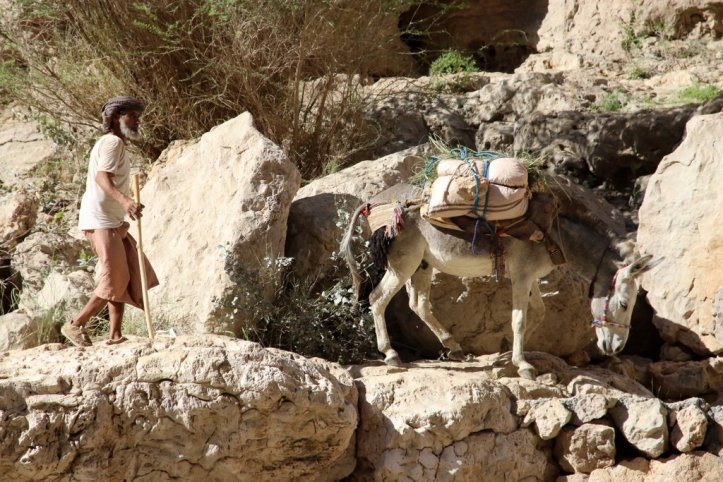
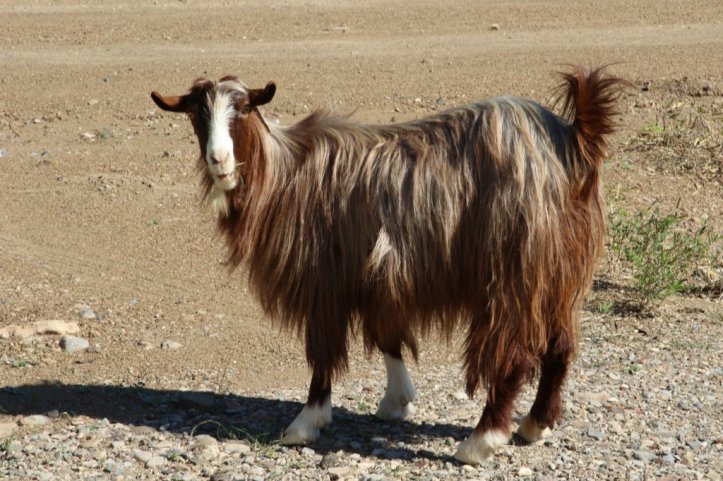
One of the most important attractions among wildlife in Oman are several species of turtles, that frequently come in large numbers from sea to sandy shores, to lay their eggs during nights. One of the best spots to observe those gentle creatures is at the sands of Ras al Jinz, on the eastern-most tip of the Arabian peninsula.
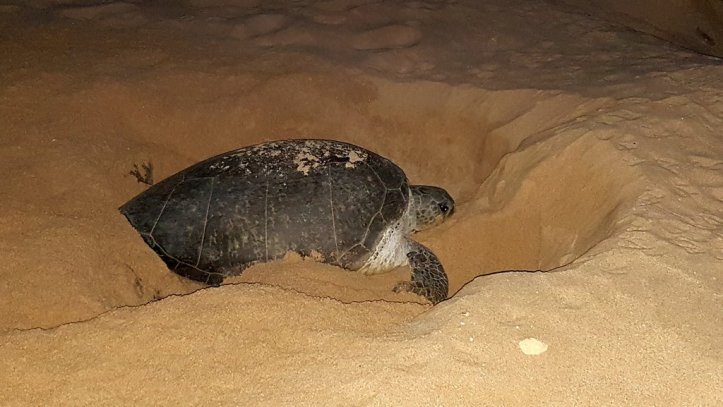
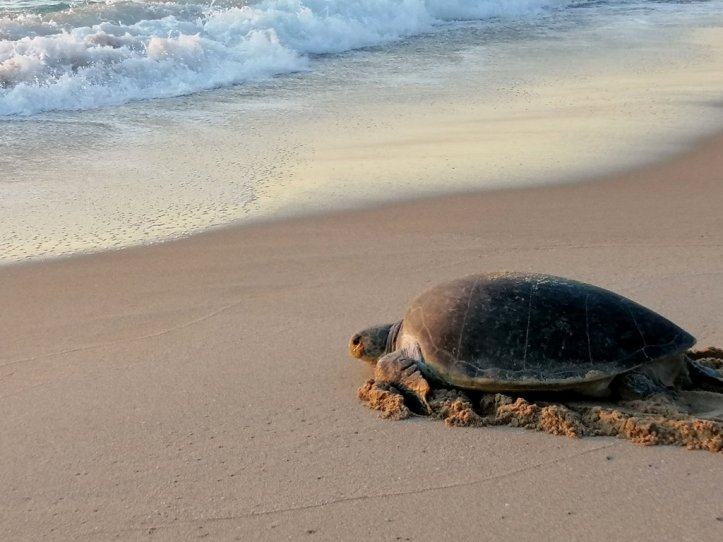
And then there are birds. Oman is quite popular with bird watchers, with more than 400 species recorded. One of the birding hot spots is Masirah Island, Oman’s largest island.
Our itinerary for this trip:
Day 1:
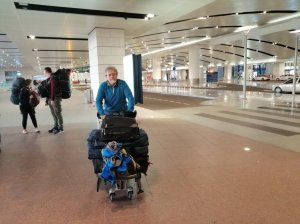
Travel with Emirates from Ljubljana via Zagreb and Dubai to Muscat.
Day 2:
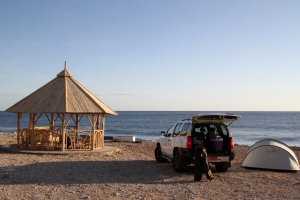
Collect our car and camping equipment early in the morning, do the main shopping for our provisions in Muscat and then head toward southeastern shores of Sea of Oman, visiting Bimmah sinkhole and Wadi Shab, two of the main attractions in that region. Overnight on the beach near Tiwi.
Day 3:
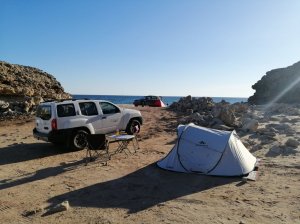
Continue along the coast to the famous ancient port of Sur and further down to Ras al Jinz to watch turtles come ashore during the night. Wild camp somewhere near the official reserve.
Day 4:
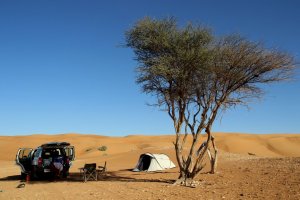
From the coast, head into the interior to Wahiba Sands. On the way there, visit Wadi Bani Khalid, another one of the splendid green and wild gorges. In the desert of Wahiba Sands, find a spot among the sand dunes, to spend the night.
Day 5, 6:
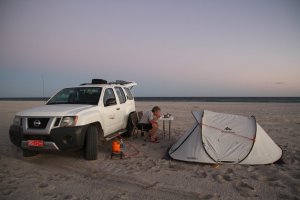
Return to the coast and take the ferry from Shannah to Massirah Island. Spend the next two nights there, relax and explore the island.
Day 7:
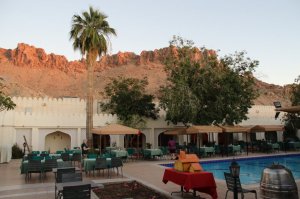
Return by ferry to the mainland and drive to Nizwa. After a week of camping, spend one night in the hotel for a change.
Day 8:
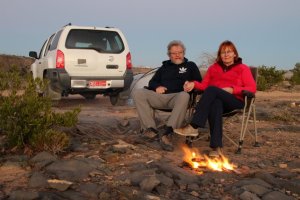
After visiting Nizwa’s fort and suk, drive to the top of Al Jabal Al Akhdar mountain. Spend a night camping on top of the high Sayq plateau.
Day 9:
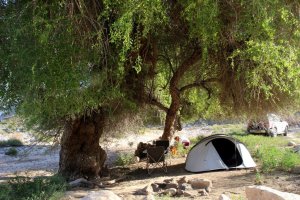
Visit medieval forts of Jabrin and Bahla and then drive via town of Al Hamra to the heart of Oman’s highest mountain, Jabel Shams. Walk the famous “balcony walk”, high above Oman’s Grand Canyon and spend the night somewhere in the foothills of this majestic mountain.
Day 10:
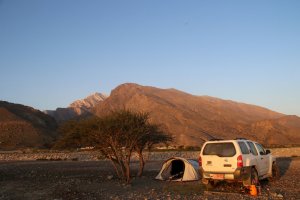
After visiting Al Hutta Cave, drive through the heart of Western Al Hajar mountains, past picturesque mountain village of Bald Sayt and through famous Wadi Bani Awf to the northern foothills of Jabel Shams. Spend a night wild camping somewhere near the town of Ar Rustaq.
Day 11:
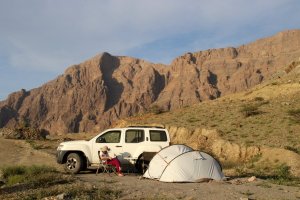
Visit some famous castles along “Ar Rustaq loop” and spend the night somewhere in the region of Wadi Mistal.
Day 12:
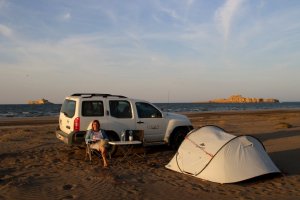
Return to the coast at the town of Barka. Have a leisure day on one of the nearby beaches.
Day 13, 14:
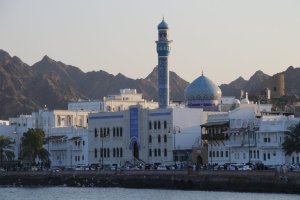
Return the car and camping equipment in Muscat. Spend two nights in Mutrah, the old part of Oman’s capital and explore the mysteries of this splendid Arabian city.
Check a detailed description of each part of the trip by clicking on the following links.
Trip installments:
Part 1: The coast
Part 2: Desert and mountains
Part 3: Forts and castles
Part 4: Muscat




A timely post thanks as we are off to Oman next month to stay with family based there. Best wishes from Kafue NP, Libby and Andy Kasabushi.
LikeLike
Hi Libby and Andy,
Coincidences like this one never cease to amaze me – what a small world we live in! 😉 Have a nice trip to Oman.
LikeLike
Hi, I am really pleased to have discovered your wonderful travels from the 4x4community.za site. We live in Dubai and have done many trips to and through Oman- it’s great to see that it made it to your wishlist! I am thinking through our next adventures and really keen to visit Africa more- we have done 2 trips to SA (around the Kruger) and to Kenya (Laikipia and the coast). I am wondering about taking our 4×4 from here to E Africa (maybe drive to Salalah and then ship from there to Mombasa?) and working our way around. I was interested to read your section on vehicles. It seems that you have decided it is generally better to rent- is that something you would always advise? Thanks for the marvellous trip reports. Rory
LikeLike
Hi Rory,
Thanks for your encouraging words. Regarding renting versus owning a vehicle: No, I do not advise one over the other in general. It depends on so many factors. For us, renting is currently the only option, because we can only afford relatively short trips, as we are still working. Once we are retired, this might change, though…
LikeLike